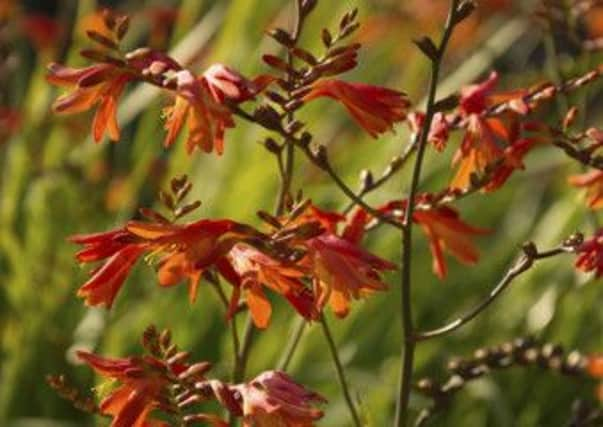It’s always the season for colour


Coming back recently from a break in the beautiful region of Tuscany, Italy where fields of bright sunflowers contrast with green rolling hills, vineyards and postcard-perfect farmhouses, I felt pretty depressed - until I looked into my garden, and saw a riot of colour in my late-summer border.
If you plant carefully, you too could return from holiday to find exciting hues of vibrant reds, burnt oranges and sizzling yellows intermingled with wafting ornamental grasses, front-of-border sedums and palm-sized lily blooms in the perennial border.
Advertisement
Hide AdAdvertisement
Hide AdIn my own garden, repeat plantings of clumps of bright red Crocosmia ‘Lucifer’, whose sword-like leaves and spikes of flowers provide both colour and architectural value, stand alongside burnt orange Helenium ‘Moerheim Beauty’, providing a dazzling clash of colours, the daisy-like flowers of the heleniums sometimes lasting into autumn.
Other great late-summer perennials include rudbeckias, also known as coneflowers because their showy, yellow petals hang down, making the dark central cone prominent.
The daisy-like flowers are attractive to bees and the plants, whose heights range from 60cm to 180cm depending on variety, suit most border situations, although taller varieties may need staking.
They thrive in full sun and a reasonably fertile, moist soil, and good companions include red hot pokers. Some rudbeckias look fantastic as container plants, adding interest around purple cordylines, and the flowers can last to October. I am also a fan of sedums in the flower border, extending seasonal interest well into the autumn. They are fairly low-growing so do well at the front of the border and are long lasting, their pale green, succulent foliage appearing in spring and early summer followed by flowers in late summer in pink and yellow.
Advertisement
Hide AdAdvertisement
Hide AdSedums are also known as ice plants because if you touch them on a warm day the leaves feel cool. S. spectabile and S. telephium varieties are popular with bees and butterflies, especially on warm days, while hoverflies prefer the dark, mat-like S. spurium.
Most sedums do well in well-drained soil, are drought tolerant and also suitable for containers.